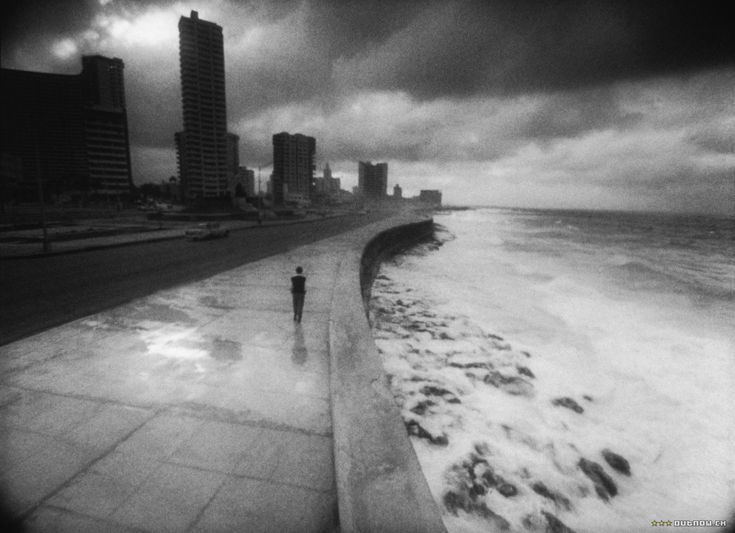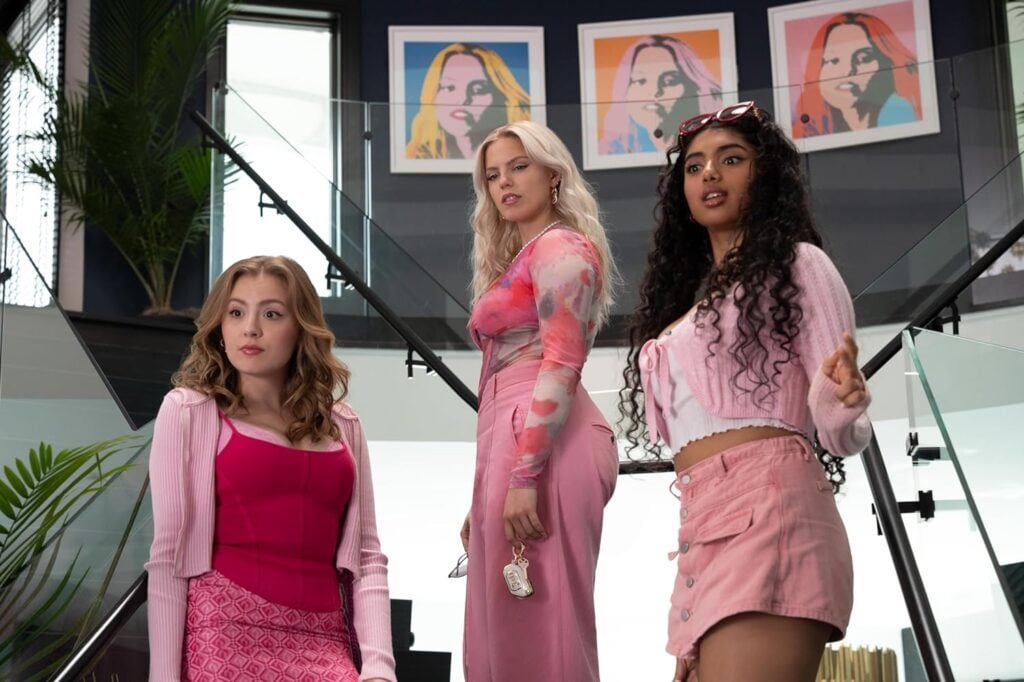Star Trek: Lower Decks goes boldly where no Trek has gone before: comedy! After half a century of different shows and films that mostly played it straight, Lower Decks lovingly has fun playing in the same universe as its predecessors, taking a lighter approach while maintaining sincerity.
The Production: 4.5/5
Star Trek has existed in some form or another for over fifty years, but despite its longevity, much of the humor derived from it in that time period has been either at the expense of the franchise, or more frequently, at the expense of those who consider themselves fans. With CBS All Access (now called Paramount+) launching a new expansion of the Star Trek universe comprising of multiple shows of varied styles set across different time periods, choosing to develop an animated comedy was an inspired choice. The result is Lower Decks, a show set shortly after the last of the Next Generation films, focusing on lower ranked crew members on one of Starfleet’s least important ships – a marked contrast from every previous Trek iteration.
What may come as a surprise is how much Lower Decks loves Star Trek: this isn’t a show with a mean-spirited bone in its body. Rather than making fun of Trek (and the people who watch it), Lower Decks looks for humor just around the corners of the more serious portrayals that preceded it. It’s a show that acknowledges that not every ship is as majestic as the Enterprise, and not every captain is as bold as Kirk or thoughtful as Picard. It’a a show that imagines what Starfleet must be like for the rank-and-file, and tells the story through their eyes. The chief protagonists, Brad Boimler (Jack Quaid), Beckett Mariner (Tawny Newsome), D’Vana Tendi (Noel Wells) and Sam Rutherford (Eugene Cordero) are young and impressionable, eager to prove their worth and find their places, allowing Lower Decks to look at Star Trek through a “coming of age” lens that is both refreshing and relatable. Their ship, the U.S.S. Cerritos, is led by Captain Carol Freeman (Dawnn Lewis) and First Officer Jack Ransom (Jerry O’Connell), whose command choices can seem questionable from the perspective of the ship’s most junior crew members.
The first season of Lower Decks begins a little uneven before finding its groove in the home stretch. The primary mission of the Cerritos is second contact, that is, following up with new civilizations discovered by ships like the Enterprise. By structuring the show this way, creator Mike McMahan (of Rick & Morty fame) has created an organic template to bring in familiar worlds, species and characters from other Trek shows, while also providing plenty of fertile new ground to cover. When some of the earlier episodes occasionally miss the mark, though, it’s rarely because of too many old references or in-jokes; rather, the earlier episodes tend to raise the stakes to absurd heights that play up humor at the expense of believability. But as the season progresses, the show becomes more comfortable with lower stakes scenarios which provide plenty of obstacles to be overcome without escalating beyond a reasonable suspension of disbelief. The more believable the Cerritos and its crew are allowed to be, the funnier the humor becomes.
If the hijinks of the pilot “Second Contact” start seeming a bit much by episode’s end, by the time the fifth episode “Cupid’s Errant Arrow” rolls around, the writers seem to have found the right balance. Even when an episode like “Temporal Edict” winds up going off the rails, the premise (in this case, that Captain Freeman discovers that Starfleet engineers routinely overestimate the amount of time simple tasks take to complete so that they look like heroes when they come in ahead of schedule) is solid. Later season episodes like “Much Ado About Boimler” and “Veritas” are much more successful at finding the humor while staying grounded. The penultimate episode, “Crisis Point,” has the crew visiting the holodeck to put themselves in a movie version of their lives, allowing the showrunners to pay homage/lovingly tease moments from all of the Trek feature films, from Robert Wise’s indulgent visual effects all the way to J.J. Abrams’ lens flairs, and just about everything in between. And finally, “No Small Parts” succeeds on a variety of levels: as a genuinely thrilling season finale, an opportunity for some welcome cameos, and as an honest critique of some of Trek’s previous shortcomings. (Mariner and Freeman’s discussion about first contact missions and Starfleet’s tendency to swoop in with a big entrance, solve all of a new civilization’s problems with a lofty speech from the captain, and then rarely following up can be seen both as an in-universe look at Starfleet’s blind spots as well as a real-world criticism of episodic television’s tendency to favor simplicity over nuance.)
Video: 5/5
3D Rating: NA
Lower Decks: Season 1 is presented in its original aspect ratio of 1.78:1. With a visual esthetic that is equal parts primetime animated sitcom and TNG-era bright lighting/use of color, the Blu-ray does not disappoint, reproducing the look of the original CBS All Access streaming presentation with perhaps a slight uptick in detail. Colors remain vivid, animation is rendered without banding or compression issues, with exterior views of the U.S.S. Cerritos looking particularly impressive. The animators have made a conscious decision to give the Starfleet ships and crews the cleanest and most detailed animation, while using some less refined styles on certain villains and alien species to better emphasize the contrast between the different groups, giving the program a unique look that the Blu-ray is more than capable of handling.
Audio: 5/5
The lossless DTS-HD MA audio track features a 5.1 mix that appears identical in content to what aired on CBS All Access. Dialogue is primarily presented through the center channel, with the balance on the mix generally being front speaker oriented. With that said, Chris Westlake’s musical score takes full advantage of the entire soundstage, and action sequences make good use of the surround channels. Lower Decks is mixed more like a straight Star Trek show rather than a comedy, an inspired choice that actually allows the humor to play better than if the show was mixed more like an animated comedy (something which is further elaborated on by the show’s crew in the bonus materials).
Special Features: 4/5
The first season of Lower Decks comes with about a dozen featurettes and a handful of animatics, offering a reasonably detailed look into the production of Star Trek’s first excursion into comedy. Some of the material appears to be repurposed from bonus material originally created for the former CBS All Access service (now Paramount+).
While the interviews used in all of the featurettes were conducted via lower resolution webcam sessions, different animated backgrounds have been used to give the footage a less monotonous look than a typical remote interview. And while each featurette is short, they cumulatively add up to something on par with a full length documentary. Featurettes are included on both discs, with the majority accessible within each episode’s submenu, with two additional featurettes in a separate section on the second disc. (The bonus features are not as episode specific as their placement on the disc might lead one to believe.). Unfortunately, there is no “play all” option available for the bonus material. All bonus material is presented in HD with Dolby Digital 2.0 stereo sound and optional English subtitles.
DISC ONE
Episode 101 – Second Contact
- Lower Decktionary: Joining Starfleet (6:21) – The origins of the show and expansion of the Star Trek Universe are explored here.
- Full Length Animatic (22:29) – A rough draft version of the pilot that gives a surprisingly close preview of how the episode would turn out.
- Deleted Animatic (1:02) – A deleted scene with Mariner and Boimler is presented in animatic form.
Episode 102 – Envoys
- Lower Decktionary: Aliens Among Us (7:31) – A look into how alien species from previous Trek shows were interpreted through the lens of animation.
Episode 103 – Temporal Edict
- Lower Decktionary: The Animation Process (8:09) – The process of making each episode is described, touching on both the directing and recording of the voices, as well as the intricacies of putting together the animation.
Episode 104 – Moist Vessel
- Lower Decktionary: The Main Titles (7:15) – Executive Producer Alex Kurtzman talks about his love of title sequences in general, and Creator Mike McMahan chimes in about how it was important to him for the title sequence to both allow the audience to see the ship in action while also never losing sight of the idea that the show is a comedy. Composer Chris Westlike also discusses his process in conceptualizing and writing the theme music.
- Deleted Animatic (1:18) – Two deleted scenes in animatic form are paired together: Boimler trying to be a “bad boy” and Mariner exercising with Shaxs.
Episode 105 – Cupid’s Errant Arrow
- Lower Decktionary: Art Design (4:59) – McMahan talks about the decision to style everything in a “prime time animated comedy” fashion.
DISC TWO
Episode 106 – Terminal Provocations
- Lower Decktionary: The Holodeck (6:31) – The staff discusses how TNG made the holodeck a part of Trek’s mythology that’s now easily recognized and understood by the audience, which made them eager to explore it further without overusing it. (This makes for an interesting contrast from the TNG bonus features, where many of that show’s writers complained about its existence.)
Episode 107 – Much Ado About Boimler
- Lower Decktionary: Division 14 (4:05) – A further exploration of Division 14, a new section of Starfleet created as an answer to the question, “What happens to people who get sci-fi injuries that can’t be solved by the end of the episode?”
Episode 108 – Veritas
- Lower Decktionary: Deck Dynamics (5:06) – This featurette explores the relationships between the lower deck crew members and the main bridge staff.
Episode 109 – Crisis Point
- Lower Decktionary: The Music of Lower Decks (6:19) – Mike McMahan and Chris Westlake discuss their more dramatic approach to scoring Star Trek’s first comedy series, with Westlake observing “the more seriously we took the music, the funnier the show became.”
- Crisis Point: The Rise of Vindicta Trailer (1:28) – A theatrical-style trailer for the “movie within the episode” that has nearly as many references to past Trek trailers as the actual episode did to Trek movies.
Episode 110 – No Small Parts
- Lower Decktionary: All in the Family (6:30) – The cast and crew discuss how the show fits in with previous Trek series, with McMahan talking about his hopes that the show is just as enjoyable for people new to Trek as it is for longtime fans. The crew also discuss wanting to really earn the cameos that appear at the end of the season.
Extras
- Faces of the Fleet (24:43) – This more in-depth featurette explores the main characters and the cast that portrays them, including some amusing audio outtakes and improvisations from the recording sessions.
- Hiding in Plain Sight (7:39) – This featurette offers a revealing peek at the various Easter Eggs that were spread out throughout the season.
Overall: 4.5/5
Star Trek: Lower Decks – Season 1 is a promising beginning to Trek’s first foray into animated comedy. Though the show has some early season growing pains in finding the right balance of humor, by the time the season ends, everything has finally clicked into place. With the show returning for a second season in August, and already renewed for a third season, there appears to be a promising future ahead for Lower Decks and its fans. CBS/Paramount’s Blu-ray edition offers terrific video and audio quality, along with over a dozen behind-the-scenes featurettes and some deleted material that together add up to a reasonably comprehensive overview of the process of making the show.
https://www.amazon.com/Star-Trek-Lower-Season-Blu-ray/dp/B08SYWV8ZD
Post Disclaimer
Some of our content may contain marketing links, which means we will receive a commission for purchases made via those links. In our editorial content, these affiliate links appear automatically, and our editorial teams are not influenced by our affiliate partnerships. We work with several providers (currently Skimlinks and Amazon) to manage our affiliate relationships. You can find out more about their services by visiting their sites.






Similar threads
- Neil Middlemiss
- Blu-ray and UHD
2 3 Tags 4k blu-ray paramount star trek uhd review